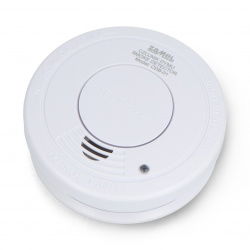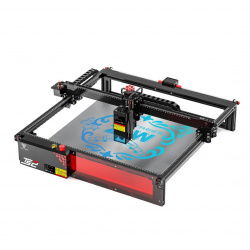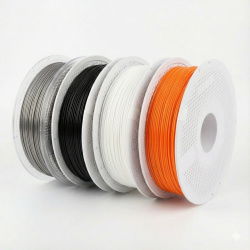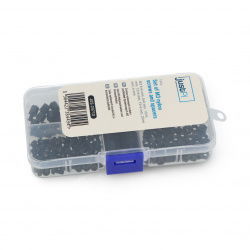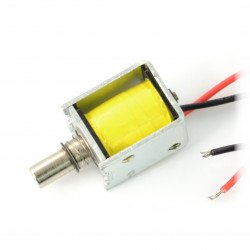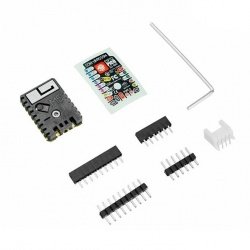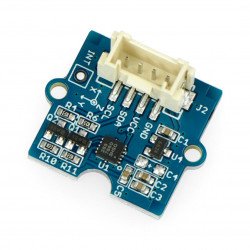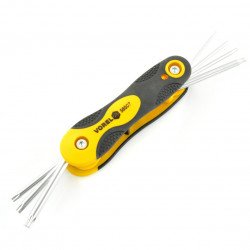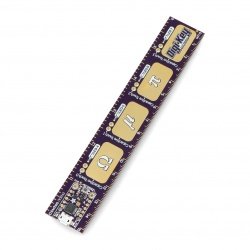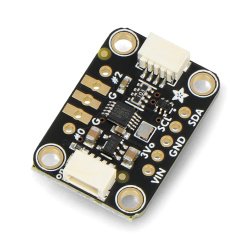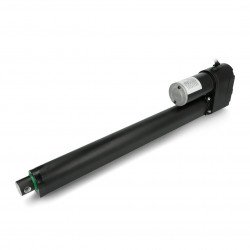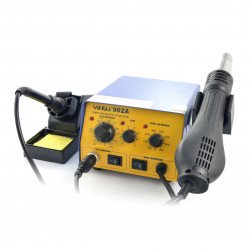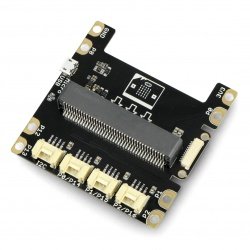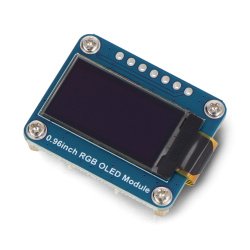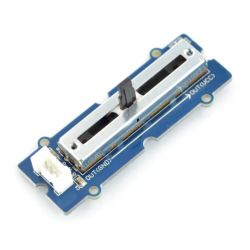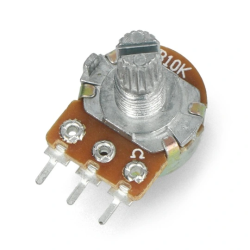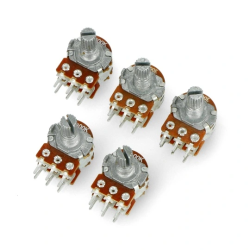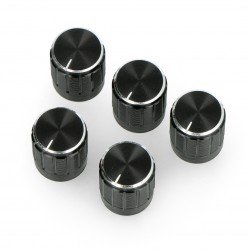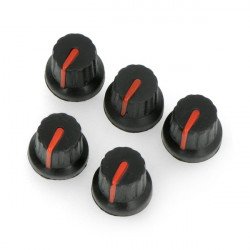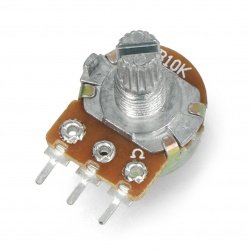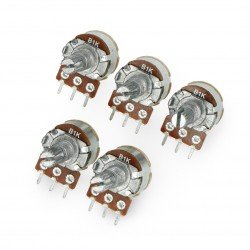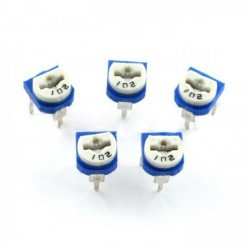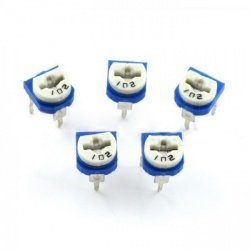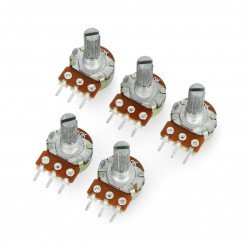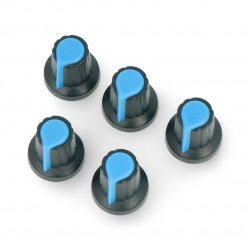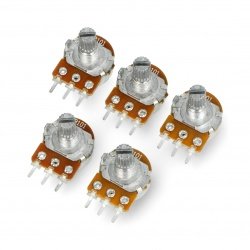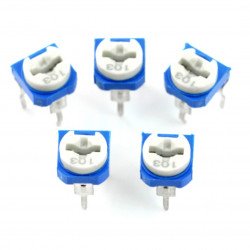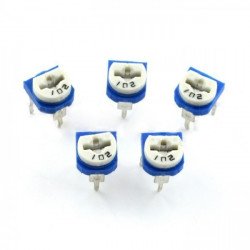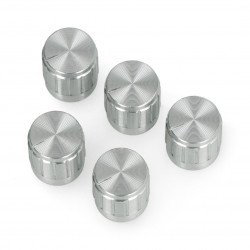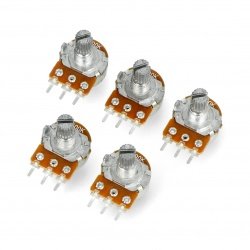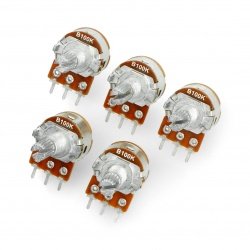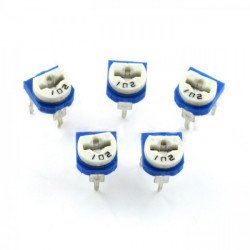Potentiometers are adjustable resistors with a wide range of applications
Variable resistance resistors are often used to control electrical and electronic devices. These elements, depending on the geometry, allow converting rotational or sliding motion into a change in resistance ranging from zero to 100% of the nominal resistance of this element.
Additionally, if the potentiometer is used as a voltage divider using all three pins, then after connecting a constant voltage and ground to the extreme pins, a voltage proportional to the position of the potentiometer slider will be present on the middle one.
Construction and types of potentiometers
Potentiometers consist of a resistive element and a sliding contact that moves along the element. Additionally, this element has a mechanical system that moves the middle contact. Many potentiometers are constructed with a resistance element formed into an arc, usually slightly smaller than a full turn, and a contact that slides over the element as it rotates, creating an electrical contact. In panel potentiometers, the slider is usually the middle terminal of the three leads.
In the case of single-turn potentiometers, the contact can make one revolution around the axis (the axis diameter may vary, depending on the specific model) of the element (usually incomplete). In addition, the pinout raster may also vary. In the case of multi-turn potentiometers, mechanical elements are added that move the contact by, for example, a lead screw, or these elements have a spiral resistance element and a slider that rotates 10, 20 or more full turns.
A rotary potentiometer is often found in music players. Another type is the linear slider potentiometer, which has a slider that moves along a linear resistance element. Also known as a linear potentiometer. Slider potentiometers are used, among others, in the music industry to adjust volume and other sound parameters. There are also mounting potentiometers available in various variants of nominal resistance. In turn, a digital potentiometer is an integrated circuit that is adjusted digitally.
Rotary potentiometers - Basic parameters
The main parameter characterizing the potentiometer is the maximum nominal resistance. This is the resistance of the resistance band along which the slider moves and at the same time it is the maximum resistance value that can be set with the help of such an element. The second important parameter is the characteristics of resistance changes. In the passive elements category, in addition to potentiometers, there are also capacitors , resistors, resistors , magnets and many others.
Variable resistor (including for volume control) - additional information
The two main characteristics used in commercially available potentiometers are linear and logarithmic. Linear potentiometers have a linear relationship between resistance and slider displacement, and logarithmic potentiometers have logarithmic characteristics.
The last parameter of this element worth paying attention to is power. Although a potentiometer is rarely used in places where it would have to emit significant power, it is worth checking whether the selected element meets the requirements of a specific application in the device. Do you have additional questions about the product you are viewing or want to order your first breadboard but don't know which one to choose? Contact us via the contact form, by e-mail or by phone. Create a free account (it is not required to place an order). Registered customers receive, among others: information about current promotions.
Rotary, slider and linear potentiometers - FAQ
































































































































































































































































































































